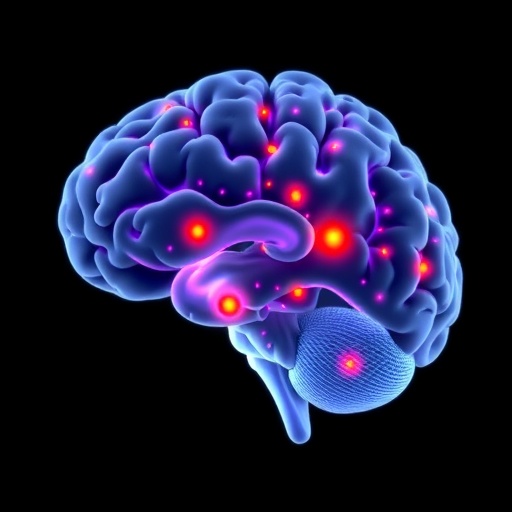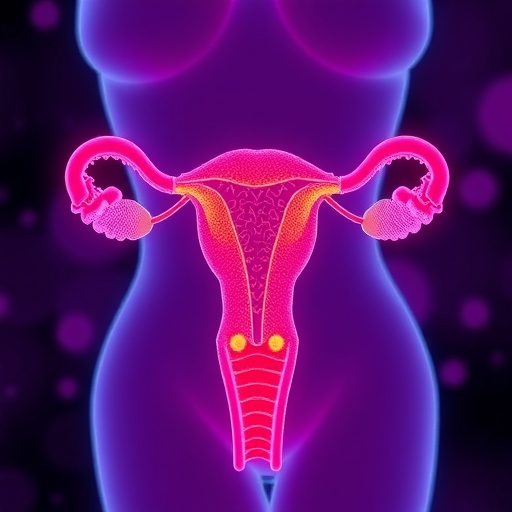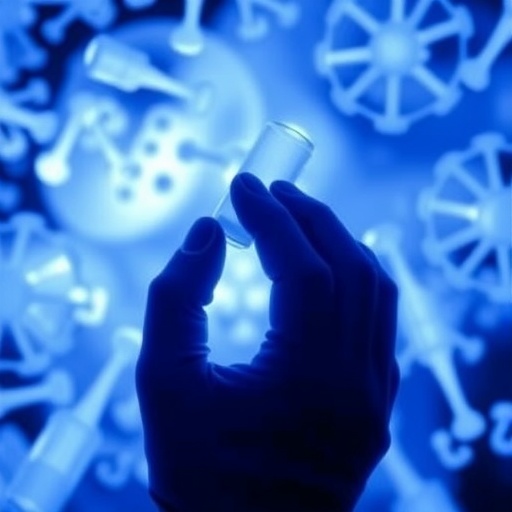In a groundbreaking development that could transform the landscape of Parkinson’s disease diagnosis and prognosis, researchers have identified a novel biomarker capable of predicting the clinical trajectory of the disease in its prodromal and early stages. This biomarker focuses on the diffusivity of fluid within the brain’s perivascular spaces—microscopic channels intimately involved in clearing metabolic waste from neural tissues. The study provides compelling evidence that alterations in perivascular space fluid dynamics offer a window into the underlying pathology of Parkinson’s disease before the onset of pronounced motor symptoms, opening new avenues for early intervention.
Parkinson’s disease, a progressive neurodegenerative disorder characterized primarily by motor impairments such as tremors, rigidity, and bradykinesia, has long challenged clinicians with its heterogeneous presentation and unpredictable progression. Conventional imaging and clinical scales often fall short in predicting which individuals in the prodromal phase—those experiencing subtle, non-motor symptoms like hyposmia or REM sleep behavior disorder—will rapidly deteriorate. The innovative approach spearheaded by Xing, Lin, Li, and colleagues exploits advances in neuroimaging and fluid dynamics analysis, propelling predictive neurology into uncharted territory.
At the core of this investigation is the perivascular space (PVS), also known as Virchow-Robin spaces, which surround blood vessels as they penetrate the brain’s parenchyma. These spaces are instrumental in the glymphatic system, a recently elucidated network responsible for clearing interstitial solutes and metabolic byproducts from the central nervous system during sleep. The efficiency of solute clearance in the brain is crucial, as accumulation of misfolded proteins like alpha-synuclein is implicated in Parkinson’s pathology.
.adsslot_O9r3C047WD{ width:728px !important; height:90px !important; }
@media (max-width:1199px) { .adsslot_O9r3C047WD{ width:468px !important; height:60px !important; } }
@media (max-width:767px) { .adsslot_O9r3C047WD{ width:320px !important; height:50px !important; } }
ADVERTISEMENT
The researchers utilized advanced diffusion-weighted magnetic resonance imaging (DW-MRI) protocols optimized for quantifying fluid diffusivity within perivascular compartments. By meticulously mapping diffusivity changes, they uncovered a distinct pattern correlating with disease stage and severity. Subject cohorts included individuals with prodromal symptoms suggestive of Parkinson’s and patients in the earliest clinical stages of the disease, enabling a longitudinal perspective on disease evolution.
Crucially, the study demonstrated that increased diffusivity of perivascular space fluid precedes overt symptom manifestation and is a potent predictor of subsequent clinical deterioration. This suggests that disruption of perivascular clearance mechanisms may not merely accompany but actively contribute to neurodegeneration. The implications extend beyond diagnostics, hinting at novel therapeutic targets aimed at restoring or enhancing glymphatic function to slow or halt disease progression.
Biophysically, increased fluid diffusivity in PVS may reflect breakdown or dysfunction of the perivascular membrane structures, altered vascular pulsatility, or perturbations in cerebrospinal fluid dynamics. These alterations could facilitate the buildup of neurotoxic proteins and inflammatory mediators, creating a self-propagating cycle of neural injury. The findings align with emerging hypotheses situating vascular and clearance system dysfunction as central in neurodegenerative disease pathogenesis.
From a methodological perspective, the study represents a triumph in integrating advanced neuroimaging with computational fluid dynamics modeling. High-resolution DW-MRI allowed for non-invasive quantification of minute fluid movement signatures, while statistical analyses controlled for confounding factors such as age, comorbidities, and medication status. The robust correlation between perivascular fluid diffusivity and clinical metrics of decline strengthens confidence in the biomarker’s utility.
The potential clinical applications are vast. Early identification of high-risk individuals through PVS fluid diffusivity measurements could prioritize candidates for neuroprotective trials. Moreover, tracking diffusivity changes longitudinally offers an objective measure to evaluate response to emerging therapies targeting glymphatic function or alpha-synuclein aggregation. Translation into accessible clinical imaging protocols could revolutionize personalized medicine approaches for Parkinson’s disease.
This discovery also prompts renewed interest in the glymphatic system’s role in neurodegeneration more broadly. While traditionally overshadowed by neuronal and synaptic pathology, the clearance pathways constitute a critical frontier in neuroscientific research. Insights gained here may inform understanding of other disorders marked by proteinopathy and chronic inflammation, including Alzheimer’s disease, multiple system atrophy, and Lewy body dementia.
Despite the enthusiasm, the authors acknowledge limitations and emphasize the necessity for larger, multicenter studies to validate findings across diverse populations. The field awaits replication of these results and refinement of imaging techniques to standardize perivascular fluid diffusivity assessment. Furthermore, disentangling causality versus correlation remains a key challenge—does impaired clearance drive pathology, or does neurodegeneration disrupt the PVS environment?
Nevertheless, the research embodies an exciting paradigm shift. It underscores a systems-level appreciation of Parkinson’s disease pathophysiology, integrating vascular, immunological, and protein-clearance elements. Such holistic perspectives transcend reductionist neuron-centric views and hold promise for comprehensive disease-modifying strategies.
In conclusion, the identification of perivascular space fluid diffusivity as a predictive biomarker heralds a new dawn in Parkinson’s research. By bridging neuroimaging, fluid dynamics, and clinical neurology, Xing and colleagues have illuminated a novel facet of disease biology that may enable earlier diagnosis, better prognostication, and more targeted interventions. As the global burden of Parkinson’s disease mounts with aging populations, innovations like this are urgently needed to improve outcomes and quality of life for millions affected by this relentless disorder.
Subject of Research:
Assessment of perivascular space fluid diffusivity as a biomarker predicting clinical deterioration in prodromal and early-stage Parkinson’s disease.
Article Title:
Perivascular space fluid diffusivity predicts clinical deterioration in prodromal and early-stage Parkinson’s disease.
Article References:
Xing, Y., Lin, M., Li, J. et al. Perivascular space fluid diffusivity predicts clinical deterioration in prodromal and early-stage Parkinson’s disease. npj Parkinsons Dis. 11, 169 (2025). https://doi.org/10.1038/s41531-025-01036-6
Image Credits: AI Generated
Tags: biomarkers for neurodegenerative disordersclinical implications of fluid dynamicsearly intervention strategies for Parkinson’searly Parkinson’s disease predictionfluid dynamics in brain healthmotor and non-motor symptoms of Parkinson’sneurodegenerative disease diagnosis advancementsneuroimaging techniques in Parkinson’s researchperivascular fluid diffusivitypredicting Parkinson’s disease progressionprodromal Parkinson’s symptomsVirchow-Robin spaces significance





